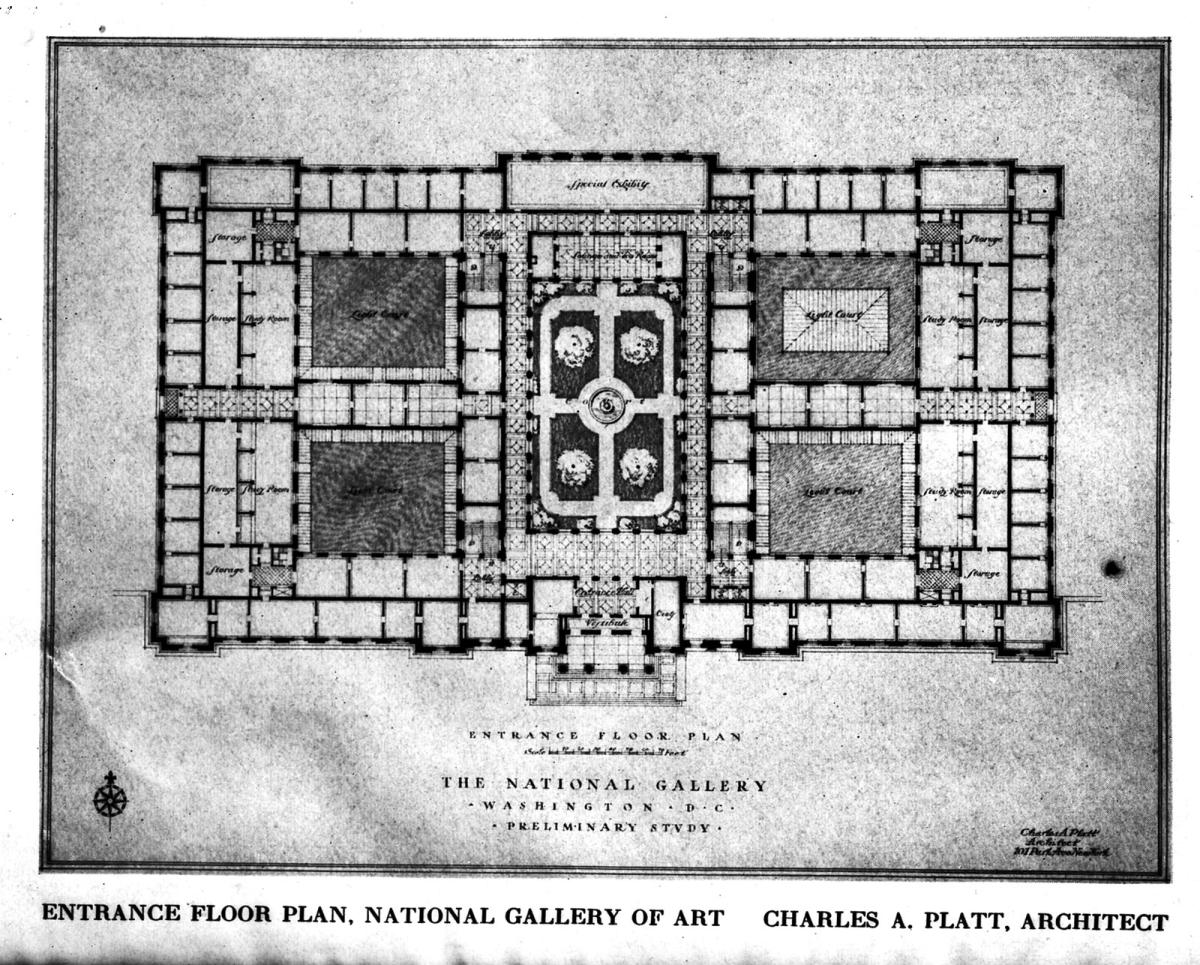Two different structures were designed for the art collection but, due to insufficient funds, remained unbuilt. The designation of the art collection as a separately administered bureau of the Smithsonian in 1920 precipitated the first design, which was destined for the space between the Natural History Building and Seventh Street. In 1925, Charles A. Platt, whose much-admired Freer Gallery of Art had recently opened, submitted these early plans, though they were never realized.
The second design was the result of radically changed circumstances in the museum’s identity. In 1937, former Secretary of the Treasury Andrew Mellon gave the nation his collection, primarily of Old Masters, and the money to build a vast museum on the Mall, provided it be called the National Gallery of Art, in emulation of its inspiration in London. With no perceptible hesitation, Congress accepted the gift and the stipulation. Therefore, the Smithsonian’s art collection, called the National Gallery of Art, was renamed the National Collection of Fine Arts.
Whereas the new National Gallery of Art explicitly excluded the work of living artists, the Smithsonian collection was especially rich in this area. In 1847, a Smithsonian Regents’ committee had already expressed the desire to cooperate with artists’ associations in exhibiting “the best results of talent” among living artists. That desire was particularly strong among supporters of the New Deal art projects of the 1930s. The redefinition of the aims of the National Collection of Fine Arts that followed from the events of the late thirties thus resulted in increased emphasis on the acquisition and exhibition of American art.
Congress proposed that the National Collection of Fine Arts be enlarged and its programs expanded as a Smithsonian Gallery of Art, and an architectural competition was held for the long-desired, independent museum building. The winner of this competition was the team of Eliel and Eero Saarinen and Robert Swanson. Their 1939 design would unquestionably have resulted in one of the most modern and functional museum structures in the United States. A conservative Commission of Fine Arts rejected the design, however, and thus the newly christened National Collection of Fine Arts remained in its long hall in the Natural History Museum (the former U.S. National Museum Building) until 1968.














